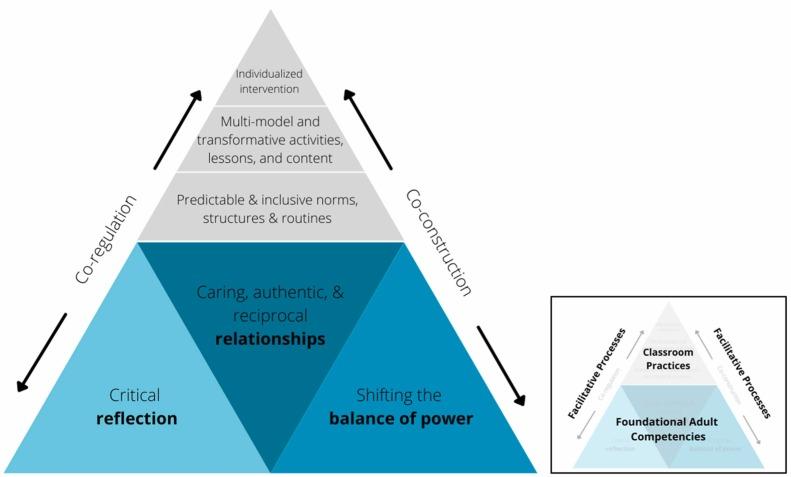The Future of SEL in Schools: Emerging Trends and Innovative Directions for lasting Impact
Social and Emotional Learning (SEL) is transforming how schools approach the holistic development of students. As society evolves, so too does the need for innovative SEL strategies that prepare students for life’s challenges both in and out of the classroom. In this article, we discuss the future of SEL in schools, explore emerging trends, highlight innovative approaches, and share practical tips to support a lasting, positive impact.
What is SEL and Why Is It Essential in Modern Education?
Social and Emotional Learning (SEL) refers to the process through which students acquire and apply the knowledge, skills, and attitudes to develop healthy identities, manage emotions, achieve goals, show empathy, maintain positive relationships, and make responsible decisions. An evidence-based SEL program is linked to improved academic performance, better emotional regulation, and a more inclusive school surroundings.
- Enhanced academic outcomes
- Reduced behavioral issues
- Increased student engagement
- Better mental health and resilience
Emerging Trends in SEL for Schools
The future of SEL in schools is shaped by new research,technological advances,and growing awareness of the importance of emotional intelligence. Here are some key trends that are redefining the landscape of SEL:
1.Integration with Academic Curriculum
Instead of treating SEL as a standalone subject, schools are increasingly weaving SEL competencies into core academic content. This holistic approach encourages students to practice emotional skills during academic tasks,creating more authentic opportunities for growth.
2. Culturally Responsive and Equity-Driven SEL
As schools serve more diverse populations, culturally responsive SEL ensures curricula honor different backgrounds and experiences. equity-based frameworks focus on reducing disparities and promoting social justice alongside social-emotional development.
3. Leveraging Technology for SEL
Digital tools, apps, and AI-powered platforms now offer innovative SEL experiences. Gamified programs and virtual reality (VR) experiences can boost engagement, allowing students to practice conflict resolution, empathy, and mindfulness in safe, simulated scenarios.
4. Focus on Teacher and Staff Well-Being
SEL’s future recognizes that emotionally healthy educators are key to effective student SEL. many districts now invest in teacher wellbeing programs, mindfulness sessions, and professional development to support the adults who model SEL for students.
5. Family and Community Partnerships
Modern SEL programs invite families and local organizations to join the conversation. Multi-tiered systems of support and collaboration ensure that SEL skills are reinforced both in and out of school, fostering continuity and community engagement.
Innovative Directions for Lasting SEL Impact
To ensure that SEL initiatives have a lasting impact,schools are moving towards strategies that are sustainable,adaptable,and deeply integrated into the school culture.Here are a few innovative directions driving lasting change:
- Student-Led SEL Initiatives: Empowering students to take leadership roles in SEL programs fosters ownership, engagement, and peer-to-peer learning.
- Trauma-Informed Practices: Recognizing and responding to trauma with compassion and resilience-building strategies is critical for student success.
- Data-Informed SEL: Using data dashboards and ongoing feedback to continually improve SEL delivery and measure its impact on school climate and student growth.
- Intersection with Mental Health: Blurring boundaries between SEL and school-based mental health provides a more cohesive support for student well-being.
Case Studies: SEL Innovation in Action
To illustrate the real-world impact of SEL, here are two examples from schools at the forefront of innovative social and emotional learning:
Austin Autonomous School district (Texas, USA)
AISD integrates SEL competencies across all grade levels and subjects. Teachers collaboratively plan with SEL specialists,and the district collects data on SEL implementation to inform continuous betterment. Family engagement events further reinforce social-emotional skills at home.
Finland’s Whole-School Approach
Finland is globally recognized for student well-being. SEL is deeply embedded in their curriculum,with a school culture that values student voice,mental health,and emotional safety. Regular classroom discussions and restorative practices contribute to high levels of student satisfaction and academic achievement.
Benefits of Future-Ready SEL Programs
Embracing current trends and innovations in SEL brings considerable benefits for students, educators, and communities. Thes include:
- Increased Academic Achievement: Students with strong social-emotional skills consistently outperform their peers academically.
- Improved Behavior and school Climate: SEL reduces bullying, absenteeism, and disciplinary incidents, encouraging a positive and safe learning environment.
- Life Skills for the Future: SEL prepares students for the future workforce by cultivating adaptability, teamwork, and leadership skills.
- Greater Equity and Inclusion: Equity-focused SEL ensures all students, regardless of background, have access to crucial life skills and support.
Practical Tips for Schools Embracing the Future of SEL
For schools aiming to develop or enhance their SEL initiatives, here are some actionable, research-backed strategies:
- Invest in Ongoing Training: Provide educators with professional development in SEL, trauma-informed practices, and culturally competent instruction.
- Collect and Use Data: Measure outcomes, gather student feedback, and use the data to refine program delivery and ensure relevance.
- Involve All Stakeholders: Engage families, community partners, and students themselves to co-create and sustain impactful SEL experiences.
- Prioritize Adult SEL: Cultivate staff well-being with resources for emotional health, self-care, and peer support.
- Apply Technology Thoughtfully: Choose digital SEL resources that align with evidence-based frameworks and enhance, not replace, human connection.
first-Hand Experience: An Educator’s Perspective
“When we introduced a student-led SEL council at our school, engagement soared. Students designed peer mentoring programs and mindfulness spaces. Teachers and students co-created our ‘emotion check-in’ wall, which allowed everyone to express how they were feeling each day. The impact was immediate—students felt heard, discipline incidents dropped, and relationships across the school community grew stronger.”
– Sarah M.,Middle School Counselor
Conclusion: Reimagining the Future of SEL in Schools
The future of SEL in schools is luminous and full of possibility. By staying attuned to emerging trends, embracing innovation, and prioritizing inclusivity, schools can cultivate resilient, compassionate, and prosperous learners.Lasting impact comes from ongoing collaboration among educators, families, and communities, and from ensuring SEL grows, adapts, and thrives in an ever-changing world. Investing in robust SEL programs today is an investment in a better, more equitable tomorrow for all students.

